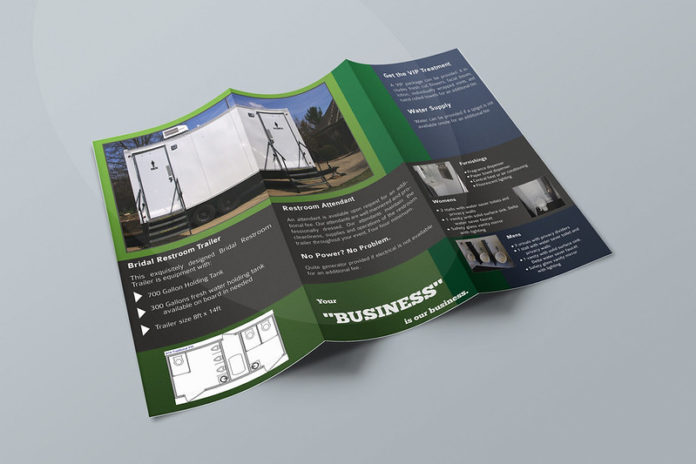Most commonly seen are two types of brochures. These two brochures differ in that their intended reading audience is different. Now you may be wondering what that means, wasn’t the one supreme intent of all brochures promoting your company? Let me explain.
The first type of brochure is the simple, folded ones that you are probably used to seeing in all kinds of offices, public places, stations, and even hospitals. This brochure is usually a piece of A4 paper folded three times to produce six total panels – three on the front, and three on the back. They include simple and introductory information about your company. Examples of information that they include besides name, logo, and contact information would be services, values, location/map, estimates, prices, awards, testimonials, pictures, and anything else that could attract customers to your company. These brochures are given to potential customers, left at places where people can look at them, or mailed/left at doors.
The second type of brochure is a booklet or folded sheet with a large number of panels (>6). These brochures give more in-depth information than the first type, and are usually given to interested customers who have requested more information or existing customers. Some examples of further info that they include could be: yearly profits, expansion plans, and new ideas.
It is a good idea for a company to possess both types of brochures at their disposal. It would be a waste to any company to give out only detailed brochures, and not enough information would be related if a company only gave out simple brochures.
2. Deciding what goes on each panel
Here we arrive at the most difficult part of brochure-making: deciding what content goes on each panel.
Usually, the front panel will contain the company’s name and logo, along with something else that aims to attract viewers’ attentions. This could be a slogan, a guarantee, a description of deals, etc. For example: “FIVE BEGINNING FREE CAR WASHES” could be printed on the front of a car wash company’s brochure to attract potential clients in picking up the brochure. After all, the hardest thing to do is to get clients interested enough to open the brochure.
On the other hand, the last panel of the brochure will contain contact information. This will include phone number, fax number, address, e-mail address, website, maps, or any other contact information.
The panels four panels in the middle contain content about your company. It is up to the organization how they want to split up their content. There are a few tips we would like to give regarding this “center” content:
a. Be firm in your persuasion. Your brochure is a form of advertising aimed at getting customers to purchase your product. Therefore, all text and pictures should have the sole purpose of persuading the reader to choose YOU.
b. Put yourself in the customer’s shoes. And we mean REALLY. Imagine that you are opening the brochure or yet another company out to make your hard-earned money. Which points would make you interested in spending time and money to request the company’s services? This could be in the form of useful guides for the reader (e.g. if your organization is in animal care, you could devote a panel to “The Right Way to Care for your Pet”).
c. Include unique, extra items, such as testimonials or awards. Trust us, people tend to trust your product more if it has gained the praise and recognition of others. Therefore, spaces dedicated to others’ lavishing praise of your product or awards won by the company will certainly catch the reader’s attention and make them more inclined toward your product.
d. Don’t be boring. That means you should never fill up a brochure with mainly text or description. Many people don’t even have the patience to read a complete newspaper everyday, why would they want to read technical terms about your product? Text that you include should be in extremely simple, jargon-free language. Make it clear, sharp, and to the point. Don’t waste words!
e. Include colorful pictures, designs, borders, and lines where appropriate to spice up the overall view of the brochure. People tend to like pretty things, so pay special attention to the aesthetics of your brochure.
Article Source: http://EzineArticles.com/4703141












